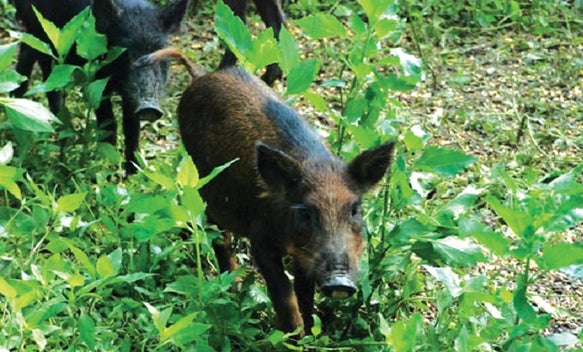East Tennessee Outdoors… Wild Hogs – Part 1
Published 1:30 pm Friday, August 7, 2020
|
Getting your Trinity Audio player ready...
|
BY DANNY BLEVINS
STAR CORRESPONDENT
When the first explorers came to America, they brought with them a few things that the natives had never seen before. One of these was the horse, and the other was the hog.
Hernando De Soto brought the first hogs and horses to the southern part of the United States in 1539. Some of these got loose from De Soto’s party and started reproducing.
Before long the Indians were riding horses, and the hogs were populating the countryside.
I like to wonder what the first Indian thought when he saw the first wild hog. He probably wondered if it was good to eat and once he tasted his first piece of loin, he was hooked.
Fast forward to 150 years ago, and we have a group of settlers who allowed their domestic hogs to free roam in the mountains. These settlers would place a mark on their hogs in the spring and then allow the hogs to run free in the mountains during the summer and fall, getting fat before winter came.
The settlers would then get together, find their hogs, bring them home, and butcher them.
Stealing someone’s hog was one of the worst crimes you could commit. It meant you were taking food from the farmer’s mouth, leaving him to go hungry during the winter months.
People have been hanged for stealing a hog, and the most famous feud in American history started because a member of the McCoy family accused a family member of the Hatfield family of taking their hog. Twenty years later, at least 14 people are dead.
Over the years the wild hog’s numbers have fluctuated from almost extinct to infestations. Today, many places are overrun with wild hogs, and that is not a good thing.
A wild hog is a very destructive animal.
Most animals, including deer, turkey, and bear will eat and leave his environment relatively unharmed. But not a wild hog.
A wild hog will destroy everything in its path. It will not only eat the buds and leaves from small trees, but it will also dig down to the root and eat it and the bark from the tree.
This is why the Tennessee Wildlife Resources Agency has tried to keep the animals in check throughout Tennessee.
First, it is illegal to transport a wild hog and release it into Tennessee. That was a major problem several years ago.
Some hunters who wanted to hunt wild hogs were transplanting them into Tennessee so they could run them with dogs and hunt them. Some of these people were running guide businesses where they were getting paid to take clients on these hunts.
When the TWRA implemented a season on the hogs, this only made things worse.
Since there was a season on the animals, they imported more of them and released them.
This had a big impact on Tennessee because the animals reproduced at an alarming rate. Before we knew it, the hogs were in many counties statewide, and we had a problem.
Then TWRA changed the way Tennessee hunters could hunt these animals, and it is one of the most complicated sets of hunting regulations in the Tennessee hunting guide.
All of these regulations are an effort to stop the importing of the hogs and to stop the growth of these animals in Tennessee.
It is estimated that of Tennessee’s 95 counties 80 of them have wild hogs. With the help of hunters and the TWRA, hopefully, the tidal wave of hogs in Tennessee can be stopped.
Next week, read part 2 of Tennessee Hogs here in this column, East Tennessee Outdoors.






